Kashmir is perhaps, to possess an authentic account of its history from the very earliest period. This past account of the valley, its culture and traditions, rise and fall of various Kingdoms, victory and defeats of the people have been noted carefully, yet critically by the sons of its soil. True it is, that the Kashmiri literature is very rich in information about Kashmir.
The beauty and the salubrious climate of the valley was known even from the ancient times. The mythological traditions supported fully by the research of geologists confirm that the valley originally was a huge lake called "Satisar", (the land of goddess Sati, consort of Lord Shiva) and its waters were blocked near Baramulla (ancient Varahmulla). In the words of Sir Francis Young Husband, "The huge lake must have been twice the length and three times the width of the lake of Geneva, completely encircled by snowy mountains as high, and higher than Mount Blank, while in the immediately following glacial period, mighty glaciers came wending down to the Sindh, Lidder, and other valleys even to the edge of water."
Kashmir's greatest historian Kalhan writes about his native land "It is a country where the sun shines mildly, being the place created by Rishi Kashyap, for his glory - big and lofty houses, learning, Saffron, icy cool water and grapes rare in Heaven are plentiful here - Kailash is the best place in the three worlds (Tn-b), Himalayas the best place in Kailash, and Kashmir the best place in Himalayas". Our immortal Sanskrit poet Kalidas writes about the valley;
"The place is more beautiful than heaven and is the benefactor of supreme bliss and happiness. It seems to me that I am taking a bath in the lake of nectar here."
Sir Walter Lawrence writes "The valley is an emerald set in pearls; a land of lakes, clear streams, green turf, magnificent trees and mighty mountains where the air is cool, and the water sweet, where men are strong, and women vie with the soil in fruitfulness. "He further writes that the valley contains everything which should make life enjoyable. There is sport varied and excellent; there is scenery for the artist and the layman, a mountain for the mountaineer, flowers for the Botanist, a vast field for the Geologist and magnificent ruins for the archaeologist.
Ancient History of Jammu and Kashmir
According to the oldest extant book on Kashmir, "Nilmat Puran" *, in the Satisar lived a demon called Jalod Bowa, who tortured and devoured the people, who lived near mountain slopes. Hearing the suffering of the people, a great saint of our country, Kashyap by name, came to the rescue of the people here. After performing penance for a long time, the saint was blessed, and he was able to cut the mountain near Varahmulla, which had blocked the water of the lake from flowing into the plains below. The lake was drained, the land appeared, and the demon was killed. The saint encouraged people from India to settle in the valley. The people named the valley as Kashyap- Mar and Kashyap-Pura. The name Kashmir also implies land desicated from water: "ka" (the water) and shimeera (to desicate). The ancient Greeks called it "Kasperia " and the Chinese pilgrim Hien-Tsang who visited the valley around 631 A. D. called it "KaShi-Mi-Lo". In modern times the people of Kashmir have shortened it into "Kasheer " in their tongue.
In Persian terminology Kashmir is a combination of two words "kash" and "mir", kash means to attract and mir means the rich, thereby Kashmir means attracting the rich.
Regarding pre-historic times Dr Sunil Chandra Ray writes Pre-historic explorations have discovered the occurence of quatemary Glacial cycles in the valley. The chief Geological formation of the ice-age here are the lacustrine deposits called the "Karewas" ", which overlay the terminal moraines of the first Glaciation and are comprised of two groups, Lower and Upper, differentiated by the moraines of the second Glaciation. The fossil remains of Elphas-hysudrious obtained in the lower 'Karewas' point to lower "Pleistocene age " , writes De Teera. The neolithic culture is indicated by the discovery of ground and polished stone axes, hoes, pestle, and bone implements at the well-known megalithic site of Burzahom, ten miles east of Srinagar. Burazahoma is famous as one of the only two megalithic sites in the extreme north-west of Indian sub-continent. We do not exactly know the Cultural horizon of the Burazahoma megalithic, nor the Purpose for which they were erected, but the indications are, they were put in places towards the end of the neolithic period at that site, between 400 to 300 B. C."
In 1960, the Archaeological Department of the Govt. of India began systematic excavation at this site. Near about the silt-bed, pits have been discovered in sections, indicating a settlement of early Pit dwellers whose date has tentatively been fixed at 3000 BC .This is perhaps the only known find of such a settlement in India. It is possible that more valuable data would be found, when extensive surface diggings are completed.
Ancient Period
Kalhan in his Rajatarangini has started the history of Kashmir just before the great Mahabharat war, and the first King mentioned by him is Gonanda I, whose initial year of reign he places in 653 Kali-era, the traditional date of the coronation of King Yudhistira, the eldest brother of the Pandvas. Gonanda was killed in a battle along with his son in India, and at the time of the commencement of the Mahabharat war, Gonanda II was ruling Kashmir. After his death, the great historion informs that the record of 35 kings who ruled the valley could not be traced by him, because of the destruction of the record. However a modern scholar Peer Zada Hassan has given a brief record of these Kings from a Persian work composed during the time of Sultan Zainul-Abdeen (1420-70). The author of this work Mulla Ahmad had been able to obtain the names of these kings from an earlier Sanskrit work "Ratnakar".
The great Mauryan emperor Ashoka is recorded to have ruled Kashmir, and Kalhan rightly mentions that the king was a follower of Buddhism. Ashoka founded the old city of Srinagar called as " Pandrethan", (Puranadhisthan) and also built many vihars and temples and repaired the old shrine. It was Majjhantika, a celebrated Buddhist missionary who was deputed to Kashmir and Urvasa to preach the faith of Buddha in those territories. Hien-Tsang mentions the arrival of 500 monks to Kashmir, and Ashoka making a gift of the valley to Sangha. Many Buddhist scholars, missionaries, and intellectuals permanently settled in the valley.
After the death of Ashoka, his son Jaluka ascended the throne of Kashmir, and the latter was succeeded by his son King Damodar Jaluka was a great king who cleared the valley of oppressing 'Malechas', (foreign unclean tribes). King Damodar lives in our memory even at present, for the Srinagar Air-port is located at Damodar I Karewa', where the king is supposed to have lived in a big palace and, where again, he was transformed into a snake by the curse of a Brahmin. The scholars also accept the theory that the valley for over two hundred years was ruled by Indo-Greek Kings before the start of" Turushka "(Kushan) rule in the state.
Cunningham records a large find of silver coins of Azes (and Azilies ) (coins of Indo-Scythians) on the banks of Vitasta (river Jhelum) in the hills between Varahmulla and Jhelum. The contact with the Greeks is responsible for the beautiful architectural, and sculptural style of old Kashmir temples, and the coinage of later Kashmir Kings has also been influenced by this contact.
Kalhan's account of Turushka Kings, indicates without any doubt the Kushan occupation of the Valley. The three kings mentioned by him are Huska, Juska, and Kanishka, each of them is credited with the foundation of a town, christened after their respective names: Tushkapura, Jushkapura and Kanishkapura. The Kushan Kings also built many temples and Vihars.
According to many scholars, Kanishka held the third great council of the Buddhist church at" Kundalvan", (Harwan, near Shalimar garden) Hien Tsang has given the proceedings of this council. Nearly 500 Buddhist and Hindu scholars attended this conference, and a learned Kashmir Brahmirt Vasumitra presided over its session. Some of the great Buddhist scholars who took active part in this council were Ashvagosha, Nagarjuna, Vasubandu Sugarnitra and Jinamitra.
Hien-Tsang praises the intellectual calibre of the Kashmir scholars, and considered them as incomparable. The entire proceedings of the conference were inscribed on copper plates in Sanskrit, enclosed in stone boxes, deposited in a Vihar. Like famous Gilgit manuscripts, it is possible that these copper plates may be unearthed in near future, and we would learn much about the rich cultural history of the valley.
After Kanishka, local weak rulers continued to govern the state, till we hear from Kalhan, the arrival of Mahir-Gul, the notorious Hun invader of our country. Kalhan correctly represents him as a savage cruel king, whose approach became known by the sight of thousands of vultures, crows and the like in the sky, eager to feed on those being massacred by his encircling army. While crossing PirPanchal pass, the tyrant rolled down one hundred elephants from a mountain pass. The shrieks and the yells of the dying elephants greatly delighted this fiend. Till the advent of Karkota dynasty (beginning of 8th Century) the Gonanda dynasty gave Kashmir only two notable rulers viz. Meghvahan and Pravansein. The former was a pious and a strong ruler with Buddhist leanings. He stopped killing of animals and birds throughout his Kingdom. In fact, he undertook conquest of many countries solely for the purpose of stopping animal slaughter. His chief queen Amrit Prabha built 'Amrit Bhawan' Vihar for foreign pilgrims and students who came to Kashmir in large numbers for learning. The next great King was Praversein Il in whose time people enjoyed perfect peace and prosperity, He was a great conqueror who extended the boundaries of the state in all directions. He has made his name immortal by founding the city of Praverseinpura (modern city of Srinagar), the summer capital of the state at present. Praversein ruled ably for 60 years.
It was during the time of the first king of Karkota dynasty, Durlabvardhan that the great Chinese pilgrim, Hien-Tsang visited Kashmir and entered the valley via Varahmulla where he found a huge stone gate. The entry of all outsiders, except the Hindus, was banned in the state then. Hien-Tsang was given a right royal reception by the people including the king. He stayed in Kashmir for nearly two years, studied Sanskrit and Hindu scriptures at the feet of learned men here.
It is the Karkota dynasty that has given Kashmir the greatest ruler Lalitaditya Muktapid (724- 761 A. D.). He is undoubtedly the Samudra Gupta of Kashmir. He was filled with an unquenchable thirst of world conquest. He invaded and conquered many countries in Asia and India. Punjab, Kanuj, Tibet, Ladhak, Badakshan, Iran, Bihar, Gauda (Bengal) Kalinga (Orissa), South India, Gujarat, Malwa, Marwar and Sindh were all conquered by him. It was he, who finally broke the power of Arabs in Sindh. All these unbroken victories created a feeling of pride among the people here and his victories came to be celebrated in a big way. Kalhan who wrote his famous chronicle (Rajatarangini) nearly four hundred years after the death of Lalitaditya, records that even in his time the victories of the great victor were being celebrated throughout the valley. Alberuni, who accompanied Mahmud Gaznavi in his Indian Campaigns, specifically mentions in his book ( Tahqiq-i-Hind) that Kashmiris observed the second of Chaitra, as the day of victory. Lalitaditya was equally a great builder and he built his capital near the sacred shrine of Khir-Bhawani, and gave it the name of Parihaspur (city of pleasure) (now in district Baramulla).
Throughout the valley, he built very fine and massive temples, out of which the world famous sun temple (Martand) built on Mattan Karewa, reminds us about the grandeur and splendour of the times when their builder ruled the state. The extensive ruins of his capital city Parihaspur, speak of his activities in the field of art and architecture. After his death, it was mostly the weak rulers except his grandson Jayatida, who ruled the valley. Both Lalitaditya, and Jayatida were great patrons of learning and extended their patronage to Bhavabhuti, Vakpatrija, UdhataBhata, Damodhar Gupta, Manoratha, Sankhdanta and Samadhimat etc. The history of the Karkota dynasty after Jayatida is a sad story of decline. All the conquered territories regained their independence, and the sovereignty of the ruler of Kashmir came to be confined to the Vitasta basin. The economic ruin was hastened by the extravagant habits of both the rulers and the ministers. In the words of Kalhan : "the ministers and the grandees carried-off the revenues of the country, feasted in mutual jealousy on the masterless kingdom, like wolves on a dead buffalo in a desert. "In Spite of all this the Karkota rule on the whole has been considered as the glorious and remarkable periods of ancient Kashmir. Laments Dr. P. C. Ray that "never before the Karkota period had Kashmir performed such a feat, nor was she able to repeat it in future."
Medieval History of Jammu and Kashmir
It was roundabout in 855-56 A. D. that Karkota rule ended, and a new Utpal Dynasty assumed power in Kashmir. The most important ruler of this dynasty was Maharaja Avanti-verman. It was he, who recovered Kashmir from utter political and economic disorder. His reign witnessed a period of peace and consolidation and prosperity. It was during this time, that the valley rose to great heights in the realm of philosophy There was an outburst of literary activity on a grand scale, and eminent men Kallata Bhat sura, Ratnakar, Anandavardhana, Muktakana, Siva- Swamin, Rudrata and Mukula. Kalhan's mention of numerous temples built and towns founded by the King, and his ministers throws plenty of light on the prosperous condition of the period. The most important foundation of the King was his capital city of Avantipur, which he embellished with two temples, one dedicated to Shiva, and other to Vishnu. Both of them are in ruins now, but even then, they stand as the most imposing monuments of ancient Kashmir.
The reign of this King would not be complete without the mention of 'Suya' one of the greatest engineers Kashmir produced in ancient times. For centuries the people of the valley had been suffering from the recurring curse of famines and floods. Suya correctly assessed that these frequent calamities occurred due to heavy rains and excessive water of Vitasta river which could not easily get out with swiftness, through a gorge near Varahmulla, as the compressed passage there had got blocked with silt and huge boulders. The people removed both the silt and stones when the great engineer threw plenty of gold and silver coins into the river at many places. Thousands of starving people immediately jumped into the flooded Vitasta and in order to find the coins, cleared the bed of the rocks and boulders which had choked up the passage. Suya, then raised stone embankments, and adopted other protective measures. Many canals were dug-out to increase the irrigational facilities. The result of all these measures was that a great increase of land became available for cultivation. The production of paddy increased and the price of one Khirwar (nearly two mounds) came down to 36 Dinars from 200 Dinars. Suya's memory is still preserved to this day, by the town Sayapur (Sopore) founded by him at the point where river Vitasta, since his regulation, leaves the basin of Mahapadomsar (Wouler lake). Avantivarman died in a temple on the Dal Lake, when a fatal disease caught him, and in the words of Kalhan," listening to the end to the song of the Lord Bhagvatgeeta) and thinking of the residence of Vishnu (Vaikuntha) he cast off her earthly life with a cheerful mind. " (June 883) Avantivarman was succeeded by his son Shankarvarman, but then the decline of Utpal dynasty set in. In the time of King Yasakara (939-48) a 'Math' (hospice) was built for the students of India, who came to Kashmir for study and meditation. It clearly reveals intimate cultural contact between the valley, and plains of India in the 10th century.
In 950, Khemgupta ascended the throne of Kashmir, a man of mediocre ability who married princess Didda, daughter of the ruler of Lohara (Poonch) and granddaughter of the Shahi king of Kabul. After the eclipse of Utpala dynasty, Lohara dynasty ruled Kashmir till the end of the Hindu rule in Kashmir (1339). Queen Didda was the de facto ruler of the state, as she was very dominating and exercised immense influence over her husband. She built many temples and monasteries and one of these was reserved for people of Madyadesha and Lata (U. P., Bihar and Central India). In 980 A.D. Didda ascended the throne after the death of her husband. Before her, two other queens had ruled Kashmir namely Yashovati and Sugandha. Didda was a very unscrupulous, and wilful lady and led a very immoral life. But inspite of these drawbacks, she was an able ruler, who firmly ruled the valley. She died in 1003 A. D. and left the throne of Kashmir to her family in undisputed succession. As her children had died young, she transmitted the crown to Sangramraj, son of her brother Udairaj, the ruler of Lohara (Poonch).
It was during her time that Mahmud Gaznavi twice tried to capture the valley but the fort at Lohara, remarkable for its height and strength proved impregnable. The Sultan was obliged to abandon the conquest.
From 1089 to 1101 A. D., King Harsha ruled Kashmir. Versed in many languages, a good poet, lover of music and art, he started his rule in a remarkable way, and became famous in northern India. His court was a centre of luxury and splendour. He introduced new fashions in dress and ornaments. His ministers were gorgeously dressed, wore earrings and head dresses, previously reserved for the members of ruling families only. But strangely enough, Harsha's career became a record of follies and misdeeds. The people also suffered from famine, and plague as well, and a considerable section of people became victims of these calamities. A confusion followed these misfortunes, leading to a general rising of the people under two royal princes Uccalia and Succalla. Harsha along with his son Bhoja were murdered, and the Kashmir throne passed into the hands of two princes respectively. Both the princes met the fate of Harsha and when our great historian Kaihan completed his 'Rajatarangini" in 1149 - 50 King Jaisimha, the last great ruler of the Hindu times was ruling the state.
Jaisimha's (1128-55) early days were critical, because of the preceding civil wars and political unrest. Still the new ruler was able to maintain his firm rule for 27 years in comparative safety. The King repaired and restored many temples and shrines, and numerous other pious foundations were also made during his reign. The people after a long time heaved a sigh of relief. From 1155 - 1339, the Kashmir rulers remained busy only in intrigues, debauchery, and mutual quarrels.. The valley soon fell prey to Mongol and Turkish raiders, freebooters and foreign adventurers. Quite naturally, the boundaries of the Kingdom got shrunk, and were reduced to the proper valley only. The Kabul valley Proutonsa (Poonch), Pajapuri (Rajauri) Kangra, Jammu, Kisthwar and Ladhak, one after the other threw-off their allegiance to the rulers of Kashmir.
In the beginning of 14th century a ferocious Mongol, Dulucha invaded the valley through its northern side Zojila Pass, with an army of 60,000 men. Like Taimur in the Punjab and Delhi, Dulucha carried sword and fire, destroyed towns and villages and slaughtered thousands. His savage attack ended the Hindu rule in Kashmir. A weak king named Raja Sahadev was the ruler then. It was during his reign that three adventurers, Shah Mir from Swat (Tribal) territory on the borders of Afganistan, Rinchin from Ladhak, and Lankar Chak from Dard territory near Gilgit came to Kashmir, and played a notable role in subsequent political history of the valley. All the three men were granted Jagirs by the King. Rinchin for 3 years became the ruler of Kashmir, Shah Mir was the first rular of Shah Miri-dynasty, and the descendants of Lankar Chak established Chak rule in Kashmir.
The last Hindu ruler of Kashmir was Udyan Dev. It was his chief Queen Kota Rani, who practically governed the state. She was a very brave lady, shrewd and an able ruler. Though she tried her best to save her Kingdom, odds were too heavy for her. The valley was again invaded by a Mongol and Turk invader Achalla, but the Queen defeated him, and drove away all the foreign troops. In the confusion Rinchin, the Ladhaki prince, whom the Hindu religious leaders of the time refused to admit into their fold, organised an internal uprising and seized the throne. Before his death, he embraced Islam. Finally another uprising was led by Shah Mir, who defeated the queen at Jayapur (modern Sumbal).
Muslim Period
After the death of Queen Kota, Shah Mir ascended the throne under the name of Sultan Shams-ud-din, and his dynasty ruled the state for 222 years. This period is one of the most important in the annals of Kashmir, in as much as Islam was firmly established here. The Shah-Miri dynasty has given us only two rulers, who are worthy of mention. One is Sultan Shihabud-din, and the second is the great Sultan Zain-ul-Abdin. The former ascended the throne in 1354 and continued to rule till 1371 He was full of energy, and vigour and he was able to establish his sway over the neighboring countries. His army mainly consisted of Damras, Lavans and the hill tribes of Poonch, Rajapuri and Kishtwar. The important commanders who served under him were both Hindus and Muslims, such as Chandra-Damra, Laula Daniara, Shura, Syed Hassan and Abdul Raina. His two important Hindu ministers were Kota Bhat and Udyashri. At the begining of his reign, he led an army to Sindh and defeated its ruler. While returning he defeated Afgans near Peshawar and then he conquered Kabul, Gazni, Gandhar, Pakhall, Swat and Multan. He invaded Badakshan, and then marched towards Dardistan and Gilgit, which he easily conquered. Then he marched towards Bulochistan and Ladhak. The ruler of Kashgar (central Asia) came with a huge army and Shihabud-din, whose army was numerically inferior, inflicted a crushing defeat and the Kashgar army was almost wiped out. This led to the annexation of Laddhak and Bultistan, which were claimed by the Kashgar rulers. It is also said that the ruler of Kashmir marched towards Delhi, and on the way conquered Kangra, and then the army of Ferozashah Tughlaq opposed him on the banks of Sutluj. Since the battle between the rulers of Delhi and Kashmir was indecisive, peace was concluded, and it was agreed that all the territory from Sirhind to Kashmir belonged to the Kashmir ruler. Shahabud-din was not only a great conqueror but also an able administrator, and he governed his kingdom with firmness and justice. He was a tolerant ruler and treated his Hindu subjects generously.
It is reported that owing to prolonged campaigns he needed money, and his ministers asked him to loot the temples, but he stoutly opposed the proposal, and to quote Jonaraj, he is reported to have said in anger: "Past generation have set-up images to obtain fame, and earn merit, and you propose to demolish them. Some have obtained renown by setting up images of gods, others by worshipping them, some by maintaining them, and you propose demolishing them. How great is the enormity of such a deed". The king founded a new town which he called Shihab-ud- din pora, known now as Shadipur(now near sumbal in District Bandipora). He is also said to have erected many mosques and monasteries. Shihab-ud-din can rightly be called the Lalitaditya of medieval Kashmir. During his time Kashmir armies marched to distant lands, and our victorious banners were unfurled on many forts of foreign countries. Thus this great ruler raised Kashmir to great eminence, and power.
The next ruler was Sultan Qutab-ud-din, and in whose time the important event and worth mentioning revolution is the arrival of sufi saint Shah Hamdan, who was the most remarkable personality of the then muslim world. At the time of his third visit he got with himself 700 Syeds from arrival of the great Iranian Saint, Mir Syed Ali Hamadani, the founder of Islam in Kashmir, which had a profound impact on every sphere of life here.These syeds established their centres of missonery activities in different parts of the valley. In 1389, Qutab-ud-din died, and he was succeeded by his eldest son Sultan-Sikandar. Shahi-Khan or Sultan Zain-ul-Abidin ascended the throne in 1420 A. D. and ruled upto 1470 A. D. nearly for half a century. His accession to the throne proved to be the return of a bright and warm day after a cold and a chilly night.
Zain-ul Abidin organized a huge army, and with its help he reconquered the Punjab, Western Tibet, Ladhak and Balti region, Kulu and Ohind (Hazara). The Sultan also maintained cordial and friendly relations with rulers of other countries. The Sheriff of Macca and the Kings of Juan and Egypt sent him presents. The Maharaja of Gwalior, hearing that the Sultan was interested in Music, sent him valuable works on Indian music. There was also an exchange of embassies and gifts between the great Sultan and the rulers of Sindh, Bengal, Tibet, Gujrat, Maiwa and Delhi. The Sultan improved the tone of administration which had rudely been shaken. He appointed talented persons in high administrative posts, irrespective of caste or creed. The Sultan had a high sense of justice and no one who committed a crime was spared, however close he was to the throne. Many grandees who were favourites of the king, were severly punished when found guilty. The king took keen interest in agriculture and like Lalitaditya and Avantivarman, many canals were dug out in all parts of the Kingdom. Jonraj and Shriva have given details of these canals in their valuable books. Owing to these irrigation works, the draining of marshes and reclamation of large areas for cultivation, Kashmir became self-sufficient in food, and rice was cheap.
One of the most outstanding features of his administration was the just and liberal treatment of the Hindus, who were not only allowed complete freedom of worship, He allowed those Hindus who had forcibly been converted, to return to their former religion. The Sultan banned cow slaughter and permitted the repair and rebuilding of the temples at government expenses. He granted lands to learned Brahmins, endowed temples and for Hindu pilgrims visiting holy places in the valley he opened a royal kitchen at Rainawari known even now as Jogi Lanker. Jiziya was almost abolished and the Sultan participated in Hindu festivals and entertained Brahmins and Sadhus on auspicious days. Some of his important Hindu ministers were the famous physician Shri Bhat, Tilakacharya, Simha Bhat, Ruppa Bhat, Karupar Bhat and Shrivara. At the same time Sultan was a great patron of men of letters such as Syed Mohammud Rumi, Syed Ahmad Rumi, Quazi Syed Mir Shirazi, Qazi Jamal and Maulana Kabir to mention only a few. The Sultan had also established a translation department where important works were translated from Sanskrit into Persian and Arabic. The Sultan opened schools and hostels for the students. It is for encouragement of arts and crafts that Kashmir will be permanently indebted to the Sultan. In those times, the valley was equally famous for its arts and crafts but these had greatly suffered in the chaos which lasted for over two hundred years. The Sultan invited competant teachers from countries to Kashmir, so that they could train people here.
Among many industries introduced by him, we can mention carpet, paper machine, paper making, silk rearing, shawls, manufacture of gunpowder etc. Kashmir became so famous for beautiful designs on silks and shawls that the state acquired an unrivalled fame in Asia. Even after a century when Babar's cousin Mirza Haider Daulghat invaded Kashmir, he wrote in Tarikhi-Reshidi: "In Kashmir one meets with all these arts and crafts which are in most cities uncommon, such as stone polishing, stone cutting, bottle making window cutting, gold beating etc. In the whole Maver- ul-Nahir (Khorasan) except in Samarkand, and Bokhara, these are nowhere to be met with, while in Kashmir they are in abundance. This is all due to Zain-ul-Abidin." The Sultan was a great builder. He founded the new city called Nowshehar (a part of the city now) He adorned it with splendid houses for his officers, courtiers and learned men. He built a palace of 12 storeys in it, each containing 50 rooms, halls and corridors. It was surmounted by a golden dome, and its spacious halls were lined with glass. Besides Nowshader, the Sultan founded the towns of Zainapur, Zainakut and Zainagir. Similarly he built the first wooden bridge at Srinagar known even now as Zainakadal. In 1470 A. D. the Sultan died and for a long time his death was mourned by the people. Sultan Zain-ul-Abidin's death sounded the death knell of the Shah-Mir dynasty. It met the same fate that the Lohara dynasty had met after the death of Jaisimha in 1156. The only important event that took place before the establishment of Chak dynasty was the invasion of Mirza Haider Dughiat who attacked Kashmir from Zogila pass in 1533. Soon he was able to establish his ascendancy in the valley. The Moghul, like Dulchu earlier, killed, looted and plundered the people, and made women and children their slaves. The Sultan of Kashmir, Nazuk Shah, became almost a puppet in his hands. Moghuls were appointed on high posts everywhere, and the Jagirs of Kashmir Noblemen were confiscated. For more than a decade Mirza was the virtual ruler of the valley and he gave peace and orderly Government to the country. He encouraged Kashmir Art and Crafts, and trade and commerce once again thrived in the valley. The last Shahmiri ruler, Sultan Habib Shah, a weakling was deposed by his commander, and nobles raised on throne Gazi Chak, a prominent military General of the time. He was the direct descendant of Lankar Chak who had come to Kashmir towards the close of Hindu rule.
The Chak rule began in Kashmir in 1561 and lasted till 1587, when Akbar, the great Moghul Emperor conquered Kashmir.
Mughal Period
The Moghuls remained in power here, from 1587 to 1752, and in this period undoubtedly the people enjoyed peace and orderly Govt. There were some rapacious officers, but on the complaint of the people the Moghul rulers immediately removed them. It was in 1579 that illuminated Moghul emperor Akbar visited Kashmir. About eighty thousand Kashmiris were entertained by Akbar at Id-Gah. During his reign Raja Todar Mal, the great Finance and Revenue Minister, made revenue settlement of the valley, which in its broad features forms the basis of the present revenue settlement in the valley. Akbar built a new town near Hariparbat and called it Nagar- Magar and built the massive wall around the hill. The great emperor visited the valley three times, and with him, came a large number of Moghul grandees, noblemen and army generals. The fame of the valley spread throughout. the country and a very large number of people started to visit the valley. But actually it was in the time of Jahangir that the beauty of the state attracted thousands of visitors to the happy valley. The great emperor visited the State thirteen times. The Moghul rulers never came alone, but were always accompanied by hundreds of Nobles, Amirs and Umras, Princes and Army Generals. Jahangir came virtually, under the spell of the scenic beauty of the place, and wherever he found a hill coming down gently to a spring or a grove of majestic Chinar trees or a beautiful lake, he utilised the place for planting a pleasure garden. Shalimar and Nishat gardens on the banks of Dal Lake, would keep Jahangir's love for natural beauty ever fresh in our memory. He laid gardens at Achabale and Verinag. Perhaps no other ruler has ever paid so much tribute to the beauty of Kashmir as Jahangir did. Shah Jahan also visited the happy valley a number of times and he too was accompanied by a large number of nobles. Owing to the long peaceful rule of the three Moghul Kings, hundreds of people now began to come to Kashmir to find mental peace, to regain their health Or attain spiritual salvation. Shah Jahan laid the garden of Chashmashai and also built a portion of Shalimar. The Moghul Governor Ali Marden Khan also laid out a number of gardens. Aurangzeb visited Kashmir only once in 1665. An interesting account of the emperor's journey to the valley has been given by a French traveller Francis Bermer who accompanied the Emperor. The traveller gives a favourable impression of the people in his book. "The Kashmiris are celebrated for wit. In poetry and sciences they are not inferior to Persians. They are also active and industrious. The workmanship, and beauty of their Palkies, bedsteads, inkstand, axes, spoons and various other things are quite remarkable, and articles of their manufacture are in use in every part of India. They perfectly understand the art of varnishing, and are eminently skilful in closely imitating the beautiful veins of a certain wood, by inlaying with gold threads so delicately wrought, that never saw anything more elegant or perfect. But what may be considered peculiar to Kashmir and the staple commodity, that which particularly promotes the trade of the country, and fills it with wealth, is the prodigious quantity of shawls which they manufacture, and which gives occupation to her children."
Aurangzeb's reign was a signal for revolts and rebellions in several parts of the country. In the distance the empire commenced an era of lawlessness, anarchy and disorder. Many states became independent under their subedhars who founded new independent states. A reign of disorder also started in Kashmir. The Moghul Governors began to loot and plunder the people, and at the same time ruthlessly started a policy of religious bigotry and fanaticism. There was absolute chaos in northern India after the invasion of Nadir Shah of Persia. The people of Kashmir could no longer tolerate the misrule of Moghul satraps, and accordingly when Ahmad Shah Abdali of Kabul was at Lahore in 1752, two Kashmir noblemen M Muquim Kant and Khwaj'a Zahir Didmari, waited upon him at Lahore, and disgracefully requested him to bring Kashmir under his control.
Afghan Rule: 1752-1819
Ahmad Shah, a free hooter of Nadir Shah gladly accepted this offer and immediately dispatched a strong and powerful Afgan army under the command of Abdullah Khan Ishik Aqasi, to occupy the valley. The Moghul satrap offered a strong resistance, but was defeated and the Afgan Governor planted the Afgan flag on the ramparts of Akbar's town at Nogar. The rule of Moghuls in Kasmir came to an end although it continued to exist in northern India, nominally upto 1857. Kashmir remained a dependency of Kabul rulers till 1819, roughly a period of 67 years:
The Pathan rule is the darkest period in the history of the state. The rulers of Kabul were great despots, and they ruled all the parts of their kingdom ruthlessly with an iron hand. The cornerstone of their policy was terror. As many as twenty eight Durrani Subedars governed Kashmir during these sixty seven years. The Kashmir nobleman had expected that Abdali would give them a good and a stable government, but the very first Afgan governor Abdullah Khan Aquasi, immediately after assuming powers started a reign of terror. People began to be looted and killed indiscriminately, and even petty Afgan soliders began to amass wealth by the foulest possible means. Most of the well to do people of the valley were summoned by the Governor to his palace, and ordered to surrender all their wealth on pain of death. Their houses were completely sacked, and many people were put to sword. There was complete gloom and despair on every side. All the prosperity of the valley was gone, and the people could not even move on the streets, for fear of being robbed of even their scanty clothing. Each and everyday for a Kashmiri was a day of struggle and uncertainty. As ill luck would have it, only weak and worthless Arnirs governed Kabul, after the death of Abdali. These Amirs would either be quickly deposed or assassinated. Naturally accession of every new Amir would mean appointment of a new Subedar in Kashmir. Hence every Governor expected his recall or dismissal at any time. This uncertainty made these rapacious governors ruthless, and they squeezed every penny from the people mercilessly. It is true, that all sections of people suffered here during their time, but the chief victims of these fiends were the Hindus. Shias and Bombas of Jhelum valley. It is strange that during this dark period a Hindu also became a Governor here. His name was Raja Sukh Jeevan Mal. It was only in his time that Kashmir heaved a sigh of relief. He was afterwards defeated and killed by Ahmad Shah. The Pathan rulers are now only remembered for their brutality and cruelty.
Sikh Rule: 1819-1846
At last the reign of terror broke the patience of the peace loving people, and a deputation of Kashmins led by Pandit birbal Dhar, and his son Pandit Rajakak Dhar,left for Lahore and fervently requested Maharaja Ranjit Singh to conquer Kashmir. Three prominent Muslims helped Pandit Birbal Dhar in his escape from the valley. They were Abdul Qadoos Gojwari, MallickZulfiqar and Malik Kamgar. In 1819., 30,000 soliders of Maharaja Ranjit Singh attacked Kashmir, defeated the Pathans, and the state became a part of Ranjit Singh's empire. On receipt of the news ,Maharaja Ranjit Singh bestowed honours in Dhar family and Lahore was illuminated for three days,
Sikh rule lasted for only 27 years and during this period 10 Governors administered the country one after another, out of whom the last two were Muslims. In the beginning Sikh rule also proved to be oppressive. "It must have been an intense relief", writes Lawrence, " to all classes in Kashmir to see the downfall of the evil rule of Pathan, and to none was the relief greater than to the peasants who had been cruelly fleeced by the rapacious sardars of Kabul. I do not mean to suggest that the Sikh rule was benign or good, but it was at any rate better than that of the Pathans. "The Sikh rule over Kashmir lasted only for a brief span of time, during which the rulers at Lahore were far too pre-occupied at home to pay any attention to the affairs of this outlying province of theirs. The misery of the people increased due to natural calamities as well, such as premature snow falls, which would destroy a ripe rice crop leading to famines. These famines were followed by diseases like cholera and plague, resulting in a heavy loss of life. Thousands of people migrated to India during these hard days, and no wonder the population of the valley came down to two lakhs from 8 lakhs.
Mr. Ranel Tayler who visited Kashmir in 1846 writes about Kashmir, "The town presents a very miserable apperance. The houses made of wood are tumbling in every direction. The streets are filthy for want of drainage, none of the bazaars looked welifilled and prospseous and altogether my ride made me very unhappy". Moorcraft who visited the valley in 1835 writes, "Everywhere the people were in most abject condition, not one sixteenth of the cultivable land is under cultivation, and the inhabitants are starving. They were in a condition of extreme weakness. Villages were half deserted and those who lived there were the semblance of extreme sickness. Villages were filthy and swarming with beggars. The rural folk on the whole were half naked and miserably emaciated and presented a ghostly picture of poverty and starvation". Such was the general condition of the state when Maharaja Ranjit Singh died in 1830. His death was a signal for the mutiny of Sikh Army which became uncontrollable, and plunged the entire Punjab into confusion and chaos.
Modern History of Jammu and Kashmir (1846-1947)
The two Anglo-Sikh wars led to the final extinction of Sikh soverignty in the Punjab and by virtue of the treaties of Lahore and Amritsar the British who had by now become undisputed masters of India, transferred and made over in perpetuity, the independent position to the Maharaja Gulab Singh and heirs male of his body, all the hilly and mountaneous country situated to the east of Indus, and west of Ravi river. In consideration of this transfer Maharaja Gulab Singh paid to the British government the sum of 75 lakhs of rupees (1846, Treaty of Artisar). Maharaja Gulab Singh entered Srinagar on 9th November 1848 at 8 in the morning. The Dogra royal line traces its descent from the ancient Kshatriyas mentioned frequently in Mahabharata. The Dogra ruler claimed that they belong to the Surya Vanshi (sun born) race. Maharaja Gulab Singh was a man of great vigour, foresight and determination. He repressed opposition and crime with an iron hand and he was umversaly feared and respected. He crushed gangs of organized plunderers, and murderers in the valley known as Galwans, and also broke the power of Bombas and Khokhas, the inhabitants of Jhelum valley region below Varamulla, who brought havoc to every home in the valley by following a policy of arson and plunder. Large numbers of forts were built in their territory which were garrisoned with troops. It was because of his energetic measures that the conditions of the people improved and after many years some confidence was inspired in the permanece of administration. The people got a spell of peace and order, after centuries of lawlessness. The greatest service of the first Dogra ruler is the foundation he laid of the modern Jammu and Kashmir State. It was Gulab Singh who conquered one by one different places and regions of the state, Jammu, Poonch, Ram Nagar, Basoli, Bhahderwah, Kishtwar, Bhimbar, Rajauri, Sikardu, Kharmang, Kiris, Khaplu, Sheghar, Astor Gilgit, Chitral, Yasin, Hunza, Nagar, and Punial. In the words of K. M. Panikar an area of more than eighty thousand sq. miles including part of Tibet, as well as part of Pamier, besides the genuinely kingdoms of Jammu and Kashmir came into Maharaja Gulab Singh's possession. This area had never been effectively united under one ruler and much of it with of course, the exception of the valley of Kashmir had never known any settled govt. "Writes P. N. Bamzai: "Mahraja Gulab Singh is the only Indian ruler to have carved Out a state during the 19th century out of the wreckage of the great kingdom of Sikhs. Moreover he is the only indian ruler to have extended the frontiers of India to their natural boundary." Even Dr Soft who is not very kind in his comments writes about him: "Gulab Singh was unquestionably a remarkable figure in the history of Northern india during the first half of the 19th Century. He was a distinguished soldier and diplomat and knew the statecraft of his own days exceedingly well."
The Maharaja died in 1857 after a rule of 11 years, during which period he laid the foundation of a sound system of administration. He was succeeded by Maharaja Ranbir Singh who ruled from 1857 to 1885. It was in his time that the rule of law commenced in the state. Almost all the laws, civil and criminal, which the British had introduced in India were with some modifications made applicable to the state. The various state departments were organised on the pattern of departments as these existed in British India. A slight attempt was also made to assess the amount of land revenue at a fixed amount.
In 1885 Maharaja Sir Pratap Singh ascended the throne and he ruled for a period of 40 years. It is in the of this Maharaja that the real modernisation of the state took place and several progressive reforms were carried through. Sir Walter Lawrence carried the first assessment of the land revenue system in the state on scientific lines. The two mountain roads- Jhelum valley road and Banihal Cart road were built linking the state with the rest of India. A scheme for drainage of the valley reclaiming waste-land and preventing floods by digging flood channels was put into operation. Construction of a water reservoir at Harwan and establishment of an electric generating plant at Mohra was also undertaken during this period. Two colleges viz Shri Amar Singh and Shri Pratap Singh Colleges, in the state besides a large number of education institutions were also established by the order of the Maharaja. The administrative machinery was completely overhauled. There was development in the means of communication and telegraphs, telephones and post offices were opened in many places. During this period a large number of people, mostly Europeans, began to visit the valley. The fame of the valley, its climate and beauty spread in all parts of the world and it can truly be said that an era of tourist traffic started in right earnest in the state. Many efforts were made by Englishmen to obtain the right of purchasing land here for building houses. This would have turned Kashmir into a British Colony. The Maharaja stoutly refused to entertain the proposal, and this actually led to the construction of House Boats. After the death of Maharaja Pratap Singh his nephew Maharaja Sir Hari Singh ascended the throne in 1925. He continued to govern the state till 1950. During this period, a large number of Indians and also foreigners came to enjoy the bracing climate of the valley. Gulmarg before independence almost looked like an English town during summer. The same was the case with Nagin Lake Maharaja Hari Singh modernized the state and carried out a large number of reforms. It was in his time that the popular elements began to be associated with the Government. The most important thing that had far reaching consequences in the future history of the state was the birth of political parties and the growth of political consciousness in the state during this period. But even more important was the liberation of the country from the British Yoke in 1947, that ended all the traces of foreign domination, absolutism and autocracy in our country. It was on 26th Jan. 1957 that the Kashmir Constituent Assembly ended the hereditary rule of the Hindu monarchy in the state exactly after one hundred and ten years of its establishment.
A brief timeline of Kashmir history
- Periods of Independence
Up to 1325: Ruled by 155 Rajas independent and sovereign
1325 to 1585: Muslim Sultans independent and sovereign (1420 to 1470) "Golden period of Kashmir history"
- Periods of Occupation and Struggle for Freedom
1586 to 1752: Mughal Rule
1752 to 1819: Tyrannical Afghan Rule
1819 to 1846: Colonized by Sikhs
16 Маг. 1846: British sold Kashmir to Dogras
1846 to 1947: Dogra Rule
15 Aug. 1947: Partition of British India Indo-Pak war to gain control over the territory of Kashmir
22 Oct.1947: Pakistani backed tribal Invasion of Kashmir
24 Oct. 1947: Pakistan occupies one third of Kashmir - Provisional Government of Azad Kashmir proclaimed
27 Oct. 1947: Indian military intervention in Kashmir- two thirds of Kashmir occupied by
India Indo-Pak War: Cease-fire maintained1 Jan, 1949.
THE KASHMIR PROBLEM
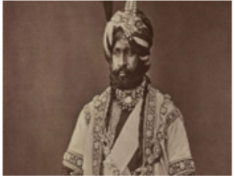
Thus, the Kashmir region in its contemporary form dates from 1846, when, by the treaties of Lahore and Amritsar at the conclusion of the First Sikh War, Raja Gulab Singh, the Dogra ruler of Jammu, was created maharaja (ruling prince) of an extensive but somewhat ill- defined Himalayan kingdom "to the eastward of the River Indus and westward of the River Ravi." The creation of this princely state helped the British safeguard their northern flank in their advance to the Indus and beyond during the latter part of the 19th century.
The state thus formed part of a complex political buffer zone interposed by the British between their Indian empire and the empires of Russia and China to the north. For Gulab Singh, confirmation of title to these mountain territories marked the culmination of almost a quarter century of campaigning and diplomatic negotiation among the petty hill kingdoms along the northern borderlands of the Sikh empire of the Puniab.
Some attempts were made in the 19th century to define the boundaries of the territory, but precise definition was in many cases defeated by the nature of the country and by the existence of huge tracts lacking permanent human settlement. In the far north, for example, the maharaja's authority certainly extended to the Karakoram Range, but beyond that lay a debatable zone on the borders of the Turkistan and Xinjiang regions of Central Asia, and the boundary was never demarcated.
There were similar doubts about the alignment of the frontier where this northern zone skirted the region known as Aksai Chin, to the east, and joined the better-known and more precisely delineated boundary with Tibet, which had served for centuries as the eastern border of the Ladakh region. The pattern of boundaries in the northwest became clearer in the last decade of the 19th century, when Britain, in negotiations with Afghanistan and Russia, delimited boundaries in the Pamirs region. At that time Gilgit, always understood to be part of Kashmir, was for strategic reasons constituted as a special agency in 1889 under a British agent.
As long as the territory's existence was guaranteed by the United Kingdom, the weaknesses in its structure and along its peripheries were not of great consequence, but they became apparent after the British withdrawal from South Asia in 1947
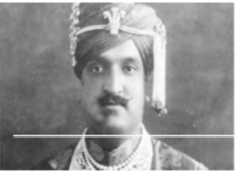
By the terms agreed to by India and Pakistan for the partition of the Indian subcontinent, the rulers of princely states were given the right to opt for either Pakistan or India or-with certain reservations-to remain independent.
Hari Singh, the maharaja of Kashmir, initially believed that by delaying his decision he could maintain the independence of Kashmir, but, caught up in a train of events that included a revolution among his Muslim subjects along the western borders of the state and the intervention of Pashtun tribesmen, he signed an Instrument of Accession to the Indian union in October 1947.
This was the signal for intervention both by Pakistan, which mischievously considered the state to be a natural extension of Pakistan, and by India, which intended to confirm the act of accession. Localized warfare continued during 1948 and ended, through the intercession of the United Nations, in a cease- fire that took effect in January 1949. In July of that year, India and Pakistan defined a cease-fire line-the line of control-that divided the administration of the territory. Regarded at the time as a temporary expedient, the partition along that line still exists.
ATTEMPTS AT RESOLUTION AND LEGITIMIZATION
Pakistan was left with territory that, was thinly populated, relatively inaccessible, and economically underdeveloped. The largest Muslim group, situated in the Vale of Kashmir and estimated to number more than half the population of the entire region, lay in Indian-side of the territory, with its former outlets via the Jhelum valley route blocked.
Many proposals were subsequently made to end the dispute over Kashmir, but tensions mounted between the two countries following the
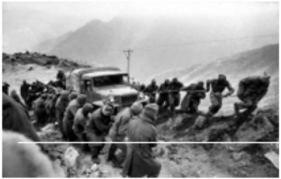
Chinese incursion into Ladakh in 1962, and warfare broke out between India and Pakistan in 1965. A cease-fire was established in September, followed by an agreement signed by the two sides at Tashkent (Uzbekistan) in early January 1966, in which they resolved to try to end the dispute by peaceful means.
Fighting again flared up between the two in 1971 as part of the India-Pakistan war that resulted in the creation of Bangladesh. An accord signed in the Indian city of Shimla in 1972 expressed the hope that henceforth the countries in the region would be able to live in peace with each other. It was widely believed that Zulfikar Ali Bhutto, then prime minister of Pakistan, might have tacitly accepted the line of control as the de facto border, although he later denied this. After Bhutto was arrested in 1977 and executed in 1979, the Kashmir issue once again became the leading cause of conflict between India and Pakistan.
A number of movements have variously sought a merger of Kashmir with Pakistan, independence for the region from both India and Pakistan, or the granting of Indian union territory status to Buddhist Ladakh. To contend with these movements, confront Pakistani forces along the cease-fire line, and support the administrative structure of Jammu and Kashmir state, the Indian union government has maintained a strong military presence there, especially since the end of the 1980s.
INSURGENCY AND COUNTERINSURGENCY
Disillusioned with lack of progress through the democratic process, militant organizations began to pop up in the region in the late 1980s. Their purpose was to resist control from the Indian union government. By the early 1990s the militancy had evolved into an insurgency, and India engaged in a crackdown campaign. The rigour of the fighting died down in the mid-1990s, though occasional violence continued to take place.
The Kargil area of western Ladakh has often been the site of border conflicts, including a serious incident in 1999. In May of that year Pakistan intensified artillery shelling of the Kargil sector. Meanwhile, the Indian army discovered that militants had infiltrated the Indian zone from the Pakistan side and had established positions within and west of the Kargil area. Intense fighting ensued between the infiltrators and the Indian army and lasted more than two months. The Indian army managed to reclaim most of the area on the India side of the line of control that had been occupied by the infiltrators.
Hostilities finally ended when Prime Minister Nawaz Sharif of Pakistan gave his assurance that the infiltrators would retreat.
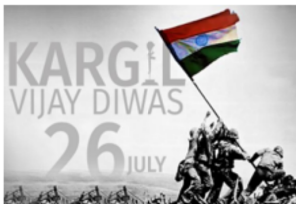
However, shelling across the line of KARGI control continued intermittently into the early 21st century, until a cease-fire VIJAY DIWAS agreement was reached in 2004. Limited passenger bus service began 26 Y in Muzaffarabad on either side of the • 2005 between Srinagar and frontier, and, after the devastating earthquake in the region later that year, India and Pakistan allowed survivors and trucks carrying relief supplies to cross at several points along the line of control. In addition, in 2008 both countries opened cross-border trade links through the Kashmir region for the first time since the 1947 partition; trucks carrying locally produced goods and manufactures began operating between Srinagar and Muzaffarabad and between Rawalkot, Pakistan, and Punch, India.
CHINESE INTERESTS
China had never accepted the British-negotiated boundary agreements in north-eastern Kashmir. This remained the case following the communist takeover in China in 1949, although the new government did ask India— without success-to open negotiations regarding the border. After Chinese authority was established in Tibet and reasserted in Xinjiang, Chinese forces penetrated into the north-eastern parts of Ladakh.
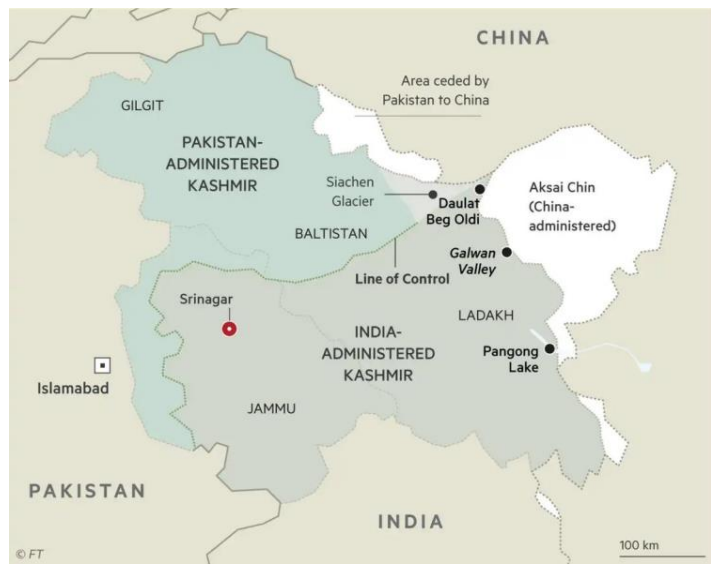
This was done mainly because it allowed them to build a military road through the Aksai Chin plateau area (completed in 1956-57) to provide better communication between Xinjiang and western Tibet; it also gave the Chinese control of passes in the region between India and Tibet. India's belated discovery of this road led to border clashes between the two countries that culminated in the Sino-Indian war of October 1962.
China has occupied the north-eastern part of Ladakh since the conflict. India refused to negotiate with China on the alignment of the Ladakhi boundary in this area, and the incident contributed significantly to a diplomatic rift between the two countries that began to heal only in the late 1980s. In the following decades, China worked to improve its relations with India, but there has been no resolution to the disputed Ladakh frontier.
POLITICAL HISTORY OF J&K
The process of formalizing Jammu and Kashmir's status as a state took several years and was completed only in 1957. The pro- India Jammu and Kashmir National Conference (JKNC) has governed the state for most of the time since 1947, with interludes mainly by the Indian National Congress (Congress Party)-notably from 1964 to 1975.
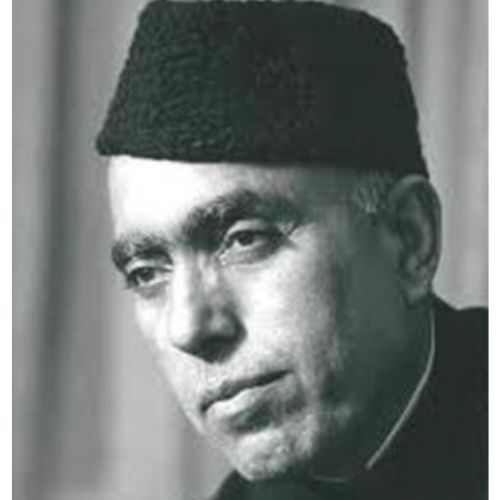
The state has also been administered directly by the central Indian government for brief periods, although one such occurrence lasted for six years (1990- 96). Sheikh Muhammad Abdullah, founder of the JKNC, served as the first head of government (called prime minister until 1965 and then chief Sheikh Muhammad minister) until he was dismissed from office by the Abdullah national government in 1953 and was imprisoned for 11 years on the grounds that he sought to separate Jammu and Kashmir from India.
Abdullah later returned to government as chief minister, in office from 1975 to his death in 1982. His son, Farooq Abdullah, also served as chief minister (1982-84, 1986-90, and 1996-2002), as did Farooq's son Omar Abdullah (2009-15).
JAMMU AND KASHMIR BIFURCATION
Following the decision to abrogate Sections 370 and 35A on 2019 August 5, the Jammu and Kashmir was bifurcated from October 31 into two union territories: Jammu and Kashmir and Ladakh. The Constitution of Jammu and Kashmir and the Ranbir Penal Code will cease to exist.
The Union Territory of J&K will have a legislature while the UT of Ladakh will have no legislature. Both the Union Territories will have Lieutenant Governors as administrators who will be appointed by the President of India. Their tenure will be determined by the President.
Four sitting members of the Council of States representing the existing state of Jammu and Kashmir shall be deemed to have been elected to fill the seats allotted to the Union Territory of Jammu and Kashmir. The term of office of such sitting members shall remain unaltered. The Delimitation of Parliamentary Constituencies Order, 1976 shall stand amended as directed in the Second Schedule of the Act.
The Election Commission may conduct the elections to the House of the People for the Union Territory of Jammu and Kashmir as per the allocation of seats specified in the Delimitation of Parliamentary Constituencies Order, 1976 as amended by this Act. There shall be a Legislative Assembly for the Union territory of Jammu and Kashmir and the total number of seats in the Legislative Assembly of the Union territory of Jammu and Kashmir to be filled by persons chosen by direct election shall be 107.
Twenty four seats in the Legislative Assembly of Union Territory of Jammu and Kashmir shall remain vacant and shall not be taken into account for reckoning the total membership of the Assembly; and the said area and seats shall be excluded in delimiting the territorial constituencies. Seats shall be reserved for the Scheduled Castes and the Scheduled Tribes in the Legislative Assembly of the Union territory of Jammu and Kashmir.
Lieutenant Governor of Union territory of Jammu and Kashmir may nominate two members to the Legislative Assembly to give representation to women, if in his opinion, women are not adequately represented in the Legislative Assembly.
There shall be a Council of Ministers consisting of not more than ten per cent of the total number of members in the Legislative Assembly, with the Chief Minister at the head to aid and advise the Lieutenant Governor in the exercise of his functions in relation to matters with respect to which the Legislative Assembly has the power to make laws, except in so far as he is required by or under this Act to act in his discretion or by or under any law to exercise any judicial or quasi-judicial functions.
The Chief Minister shall be appointed by the Lieutenant Governor and the other Ministers shall be appointed by the Lieutenant Governor on the advice of the Chief Minister. The Ministers shall hold office during the pleasure of the Lieutenant Governor and the Council of Ministers shall be collectively responsible to the Legislative Assembly. Before a Minister enters upon his office, the Lieutenant Governor shall administer to him the oaths of office and of secrecy according to the forms set out for the purpose in the Fourth Schedule.
On the abolition of the Legislative Council, every member thereof shall cease to be such members. All Bills pending in the Legislative Council immediately before the appointed day shall lapse on the abolition of the Council. The Lieutenant Governor of Ladakh shall be assisted by advisors) to be appointed by the Central Government.
The High Court of Jammu and Kashmir shall be the common High Court for the Union territory of Jammu and Kashmir and Union territory of Ladakh. The Judges of the High Court of Jammu and Kashmir for the existing State of Jammu and Kashmir holding office immediately before the appointed day shall become on that day the Judges of the High Court.
The expenditure in respect of salaries and allowances of the Judges of the common High Court shall be allocated amongst the Union territory of Jammu and Kashmir and Union territory of Ladakh on the basis of population ratio. The members of the cadres of Indian Administrative Service, Indian Police Service and Indian Forest Service for the existing State of Jammu and Kashmir, on and from the appointed day, shall continue to function on the existing cadres. The centre will be in direct control of the Jammu and Kashmir police and law and order matters.
HISTORICAL PLACES IN JAMMU AND KASHMIR
1. AKHNOOR FORT
The Akhnoor fort which lies on the bank of the Chenab river was built by Raja Alam Singh in 1802. Work on the fort, actually began in 1762 at the behest of Raja Tegh Singh. Fort is under the Archaeological Survey of India (ASI) since 1982 and has been declared a national monument protected under the Monument Act, 1958. There are two-storeyed watchtowers at corners.
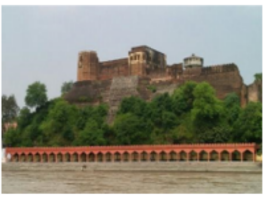
Fort is perched upon an ancient site depicting three periods of history. The first period is represented by the Harappan red and grey earthenware that include jars, beakers and goblets. The second period is marked by the presence of early historic pottery and the third period is represented by Kushana objects and an impressive wall of rubble diaper masonry flanked on both sides by a 3-metre wide street. Jia Pota Ghat is one of many ghats situated on the right bank of Chenab, the other being Pehra, Gurgi Pattan and Harmandar (named after Hari Mandir) situated downstream.
Interestingly the Jia Pota Ghat got its name from the Jia Pota tree whose botanical name is Putranjiva roxburghii of Euphorbiacee family under whose shade the Raj Tilak ceremony of Maharaja Gulab Singh took place. It was on 17th of June 1822 A.D. that the magnanimous Maharaia Ranjeet Singh, one of the most powerful king coronated Gulab Singh as Raja of Jammu region at Jia Pota in the backdrop of Akhnoor fort. To commemorate the coronation day of Maharaja Gulab Singh, a commemorative tablet has been installed at the ghat depicting the scene of Raj Tilak. Historians consider Akhnoor as the northernmost point of Indus Valley civilization.
2. AMAR MAHAL PALACE
Amar Mahal Palace was built in 1862 in a unique, French-chateau style of architecture. This palace lies on banks of Tawi River. This structure was built for Raja Amar Singh who was a Dogra king. Amar Mahal was the last residence of the Dogra Kings, Suryavanshi Rajputs and later was residence to Maharani Tara Devi, wife of late Raja Hari Singh.
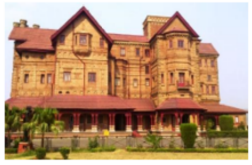
After the death of Maharani Tara Devi in 1967, her son Dr. Karan Singh and his wife Mrs. Yasho Rajya Lakshmi converted this palace for use as a museum. The museum was inaugurated on April 13, 1975 by then prime minister of India Mrs Indira Gandhi. The star of this museum is the golden throne of Jammu, weighing a whopping 120 kgs, all pure gold.
3. ANCIENT SITE OF CHAKRADHAR / SEMTHAN
Away from Bijbehara, old Vejeshwara town, is situated the famous place of Semthan. It seems that the word is originally Simhasthana- the place of tigers. Near this town, there is a small hillock named Chakdar (old Chakradhara), i.e. Vishnu. This name is mentioned in Nilmat Purana and Vitasta Mahatmeya also. The famous historian, Jonaraja, has said that a Vishnu temple existed at this place.
On the Chakdar hillock, there is a place called Haathi- Dwara, i.e. the gate of an elephant. According to 'Encyclopaedia Kashmirina' Volume I, the Chakradhara temple was burnt when the Nagas stormed the city of Narpur, the capital of the kingdom of Raja Nar. This capital was situated on the banks of Vitasta, near the Bijbehara town.
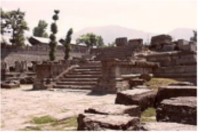
During the times of Kashmiri king Susal (1112 to 1120 C.A.), when the royal army was defeated by his opponents, the people of Vijaykhetra came to the rescue of the Chakradhara temple. The enemy tried to break the surrounding wall of the temple but could not do it. At last, one Janak Raj burnt the whole wooden wall. Numerous persons died and were injured in this assault. The dead were cremated on the hillock of Chakradhara.
The is as lonely this his to malled the rom piet To and Sha of crime earthen- pots are seen nearby. Besides some Greek coins, the coins of Parthian and Kashmiri kings were found there.
4. BAHU FORT
Bahu Fort stands tall and sturdy on the left bank of the Tawi River. Raja Bahucholan constructed this magnificent fort over 3000 years ago, making it one of the oldest monuments in the city. The Dogra rulers then made some restorations and renovations to the fort and extended its reach.
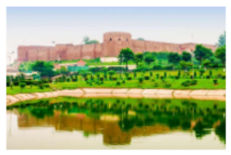
This fort is also famous for its Goddess Kali temple. The people of Jammu worship Goddess Kali, a reincarnation of Goddess Parvati and a potent symbol of motherly love enhanced by insurmountable feminine energy. The locals often refer to this temple as Bave Wali Mata Temple.
5. BALIDAAN STAMBH - WAR MEMORIAL
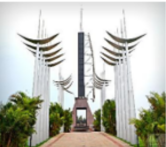
To show eternal gratitude to the martyrs of various wars fought in J&K since independence, the Indian Army conceived a unique war memorial at Bahu Wali Rakh near the historic Bahu Fort and named it 'Balidan Stambh'(the monument of sacrifice) in Jammu.Balidan Stambh is India's first war memorial. Balidan in Hindi means "Sacrifice" and Stambh means a "Pillar".
6. BHIMGARH FORT
Bhimgarh Fort, also known by the name of Reasi Fort, is a historical monument that located in picturesque town Reasi in Udhampur district. Originally, the fort was constructed with mud/clay only and later Maharaia Rishipal Rana (founder of Reasi reconstructed it by using stone.
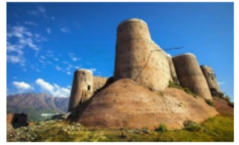
Reasi Fort was first renovated by Maharaja Gulab Singh of Dogra Dynasty in 1817 and was completed in 1841. An entry gate and a stone wall were the new addition to the fort by King Gulab Singh. Fort get renovated when it was taken under the jurisdiction of Archaeological Survey of India in 1989. It was renovated in 1990 by Mata Vaishno Devi Shrine Board.
7. BUMZUVA CAVE TEMPLE
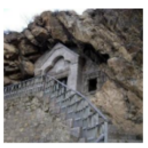
This temple is located just off the highway to Pahalgam and is dedicated to Lord Shiva. A temple is enshrined in one cave, which has a trefoil arched doorway surmounted by a pediment and side walls. On stylistic consideration it is assignable to circa twelfth century A.D. The flight of steps with railings has been restored.
8. DRAS WAR MEMORIAL
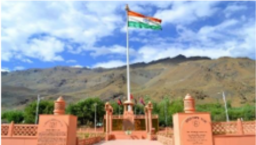
Located in Kargil, the Dras War Memorial is built by the Indian Army in memory of the soldiers and officers who lost their lives during the Kargil war in 1999. It is also known as Vijaypath. The main highlight here is the pink sandstone wall engraved with the names of the soldiers who died fighting for the country.
There is a gallery named "Manoi Pandey Gallery" which showcases the photographs taken during that time, weapons and artillery discovered during the war. Each year on 26 July, Kargil Vijay Diwas is celebrated at Dras War Memorial to pay tribute to those soldiers.
9. HARI PARBAT FORT
Hari Parbat is also known as Kooh-e- Maran lies on the west of Dal Lake in Srinagar. This Mughal structure was built by an Afghan Governor Atta Mohammed Khan in 18th century. Later a long wall was constructed in 1590 by Emperor Akbar.
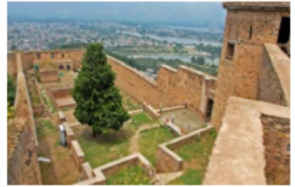
This fort is maintained by the Archaeological Survey of India (ASI) and still stands impressive with old apartments and tall pillars. Hari Parbat provides a top view of Makhdoom Sahib shrine.
10. JAMIA MASJID
Jamia Masjid was built in 1400 A.D. during the reign of Sultan Sikandar in Kashmir. This is located at the heart of old city Nowhatta, Srinagar. This Indo-Saracen architecture is designed with 370 wooden pillars and a splendid courtyard. Jamia Masjid is considered as one of sacred mosques of India.
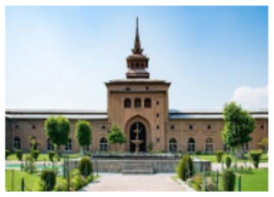
Zain-ul-Abidin, the son of Sultan Sikandar later felt the need to extend this mosque to more people and he made way for a whooping number of 33,333 Muslim members to offer prayers. This mosque has existed since 1400 A.D.
11. MAHAMAYA TEMPLE
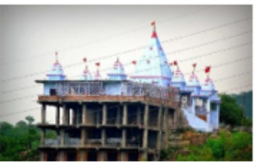
Mahamaya temple is dedicated to a female freedom fighter called Mahamaya, who belonged to the Dogra community. According to a legend, the brave freedom fighter Mahamaya lost her life to a fight with foreign invaders. To honor this gallant lady, a temple was built. The temple is situated on the Bypass Road behind the Bahu Fort.
12. MARTAND SUN TEMPLE
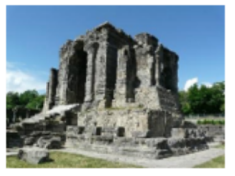
Martand Sun Temple, a spectacular shrine dedicated to Surya (the Sun) was constructed between the 7th and the 8th century. Martand, in Sanskrit, is another name for the Sun God in Hinduism. The temple complex was built by Lalitaditya, who was the third ruler of the Karkota Dynasty. The structure is constructed of limestone, and the entire complex has been built on top of a plateau near Anantnag.
13. MUBARAK MANDI PALACE
The architecture of the palace is an elaborate blend of Rajasthani, Mughal, and European influences. One of its most spectacular segments, The Shesh Mahal or The Pink Hall houses the Dogra Art Museum which has several miniature paintings and Emperor Shah Jahan's golden bow and arrow, among other interesting things. The oldest building in this Palace complex date to 1824.
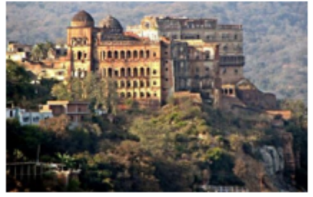
Rani Charak Mahal, situated inside the Mubarak Mandi Complex, is one of the exquisite buildings belonging to the Dogra era. This palace was constructed around 150 years ago, using red bricks and mortar. The royal ladies of the Dogra dynasty used to live here until 1925, when Maharaja Hari Singh moved the seat to Hari Niwas Palace on Manda Hills - located on the outskirts of Jammu city.
14. MUGHAL GARDENS
Islam came to Kashmir in the 14th C. with the establishment of the Shahmiri Sultanate in the region. Sultan Zain-ul-Abideen endearingly titled Budsah (Bod-Shah) or the 'Great King'_is credited with construction of many gardens in his capital Naushehar, at Andurkot (Bagh-i- Safa) and the island garden of Zani Lank within the Wular Lake.
The garden of Zani Lank may well have set the precedent for the later Mughal island gardens of Ropa Lank and Sona Lank within the Dal Lake. Another Sultan, Hassan Shah Chak also constructed a vast garden at Nauhatta around the Lachma Kul.
Later Kashmir became the summer resort to successive Mughal Emperors: Akbar, Jahangir, Shah Jahan and Aurengzeb. To Jahangir, Kashmir seemed a paradise of which 'priests had prophesied and poets sung'. Jahangir was responsible for the careful selection of the site and manoeuvring it to suit the requirements of the traditional paradise gardens.
Almost all popular Mughal gardens in Kashmir except Verinag follow a similar pattern with a central water channel sourced at natural springs. There are one or more baradaris or pavilions with a central open space 'dalan' placed over these water channels. These water channels cascade down from one terrace to another in the form of chadars or falls, where they fill in the larger water tanks, hauz, squarish in form and having an array of fountains. Finally, the water from the central channel joins a water body, either a flowing stream nearby, as in case of Achabal, or a lake, as in case of Nishat Bagh and Shalimar Bagh.
I. ACHABAL BAGH
The royal garden of Achabal is located near Anantnag predates the arrival of the Mughals in Kashmir. It was renowned even during the time of the Sultans of Kashmir in the 15th C. when an orchard garden existed at the site. The present garden was laid by Empress Nur Jahan in 1620 and was named after her as Begumabad.
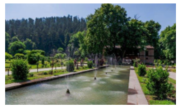
The garden was also. known as Sahebabad during the Mughal period, in memory of the Mughal Emperor Jahangir. A hammam was constructed within the garden by Jehanra Begum, the eldest daughter of Emperor Shah Jahan in the 17th C.
The garden was developed around a natural spring that existed in the area by the name of Achapal Nag, explaining where the name of the garden originated from. It is developed on the base of a forested mountain, locally known as Acchabal Thung. The central feature of the garden is the spring, whose water is collected in a canal (nahr), branch canals (jadwal, juyee) with platforms (nashiman) and pavilions (baradari) built over the water channel.
II. CHASHMA SHAHI
The garden was developed on the orders of Emperor Shah Jahan in 1632 by Ali Mardan Khan around an abundant spring emerging from the slopes of the Zabarwan Mountains.

The waters of the spring are renowned for their cool and rejuvenating qualities. This garden stands out from the rest of the gardens for its narrow rills and singular fountains within its pools - adopting the typology of early Mughal gardens of India.
III. NISHAT BAGH
Laid out in the 17th C. (1634 AD) by Mirza Abul Hasan, the Nishat Bagh is amongst the most prominent gardens that the Mughals developed. The bagh or garden is located directly along the eastern bank of the Dal Lake on the foot of 7abarwan mountain range.
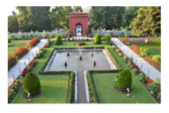
The sophisticated geometrical manner by which the chahar bagh concept and terraces have been adapted to the contours of the mountainside contribute towards making Nishat Bagh one of the finest representations of traditional chahar bagh garden layouts spread across the Islamic world. The uppermost terrace was the zenana or the private section of the garden.
IV. PARI MAHAL
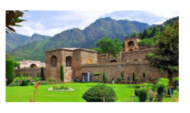
Pari Mahal is a seven-terraced garden located above the beautiful Chashme Shahi Gardens near Srinagar. The main attraction is the numerous colourful flowers and exotic fruit plantations.
The Palace of Fairies (Pari Mahal) was built by Dara Shikoh, the eldest son of the Mughal Emperor Shah Jahan. It is believed that the mahal was once a Buddhist monastery. Later, it served as a school of astrology for prince Dara Shikoh. The architecture of Pari Mahal is traditional Islamic type of architecture.
V. SHALIMAR BAGH
It is believed that at Shalimar a villa was built by Pravarassena II in the late 6th Century, when the garden was a sacred site. In the 16th C. An early Muslim King, Zain-ul-Abidin, is said to have created the canal and a bund (embankment) to Shalimar. The Farah Bakhsh, the 'Joy-Imparting' garden or lower garden of Shalimar Bagh was created by Emperor Jahangir around 1620. The construction was overseen by Prince Khurram, the later Shah Jahan.
Shah Jahan added the Fayz Bakhsh, the 'Bounty-Bestowing' garden or the zenana to the earlier Farah Bakhsh at Shalimar Bagh. The work was carried out around 1630 by Zafar Khan, the Mughal governor of Kashmir and included the building of the black marble pavilion in the zenana.
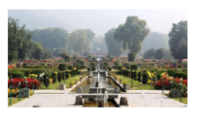
The whole of the royal garden was divided into two major parts as per the requirement of the royalty. The lower portion, comprising the first three terraces was the Diwan-i-Aam where the emperor used to hold public audience. The upper two terraces were exclusively for the Emperor and his courtiers and hence rightly called the Diwan-i-Khas.
The two most important structures within the Shalimar Bagh are the Pink Pavilion, in the Diwan-i-Aam zone of the garden, and the Black Pavilion, located in the Diwan-i-Khas. The enclosed garden has six watch towers: at each of its four corners and also in the middle.
VI. VERINAG
Verinag is an octagonal pavilion-garden, built around a spring which is the acknowledged source of Jehlum River. The garden was constructed by Mirza Haider, an able engineer of the Mughal Court at the behest of Emperor Jahangir. A Persian quatrain indicates the date of construction of the garden as 1619- 20.
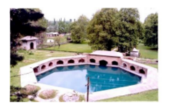
The garden was enlarged further between 1626 and 1627, during Emperor Shah Jahan's reign and was renamed Shahabad. A number of baradaris, royal bathrooms, were also constructed in the garden, which have been lost over time.
15. PANCH PEER
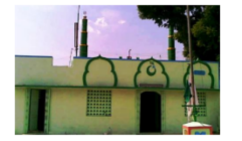
The Dargah of Panch Peer, located close to the Maharaja Palace of Dogra dynasty, is a place of great religious importance. This site is believed to be the place of meditation and preaching of the five Sufi saints and hence it is called as Panch Peer. The graves of these five saints are visited by countless devotees every year.
16. PEER KHO CAVE TEMPLE
The temple is dedicated to Lord Shiva and enshrines a black Swayambhu (naturally formed) Shiva Lingam. It is believed that Jamvant (the 'King of Bears') - a prominent character in the Ramayana meditated at this spot, which is why it is alternatively known as Jamvant Cave. There are two natural caves inside this shrine.
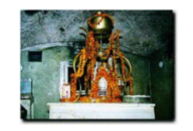
The Peer Kho Temple and Peer Mitha are two temples located in the city of temples. During the reign of Raja Ajaib Dev, for Saint Siddha Ghareeb Nath entitled Peer, the temple was built in 15th century A.D according to the unconfirmed historical records. The shrine is in proximity to River Tawi.
17. POONCH FORT
The foundation of this fort was laid in AD 1713 by Raja Abdul Razag Khan, but the construction of the same was completed by his son Raia Rustam Khan, between AD 1760 and 1787. The fort features a series of buildings that are arranged around four irregular courtyards. These structures belong to the distinct eras of Muslim rule, Sikh rule, and Dogra rule.
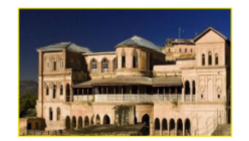
Years after its construction, the fort was renovated by Raja Moti Singh (1850- 1892), who brought a European architect for designing the front block. During the rule of Raja Baldev Singh, Poonch Fort was made the secretariat of the empire, while the official residence was shifted to Moti Mahal.
18. RAM NAGAR PALACE
Situated near Sheesh Mahal, Udhampur, Ramnagar Fort has historical importance. In 1972, it was renovated and was undertaken by the Archaeological Survey of India. It is nestled on the banks of Mansa Devi Nallah, a tributary of the River Tawi.
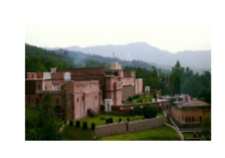
The Ramnagar Fort was constructed by then king of the region, Raja Suchet Singh who was the son of Maharaja Ranbir Singh. He died in 1844 and after that, his wife performed Sati near the fort. Therefore, one can see the Samadhi of the queen near the 19th-century palace. The fort is situated in the city of Ramnagar which was named after its last ruler King Ram Singh.
19. RANBIRESHWAR TEMPLE
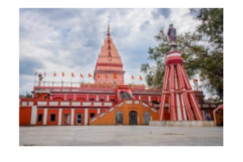
Dedicated to Lord Shiva, it is one of the most revered sites in Jammu and Kashmir. This temple is listed among the largest Lord Shiva temples in the entire North India. This shrine was built during 1882-1883 by Maharaja Ranbir Singh (son of Maharaja Gulab Singh - founder of the state of Jammu and Kashmir). Inside this temple, there are 12 crystal Shiva lingams. The festival of MahaShivratri is celebrated at grand level.
20. SHRINE OF HAZRAT GANGA BABA RISHI
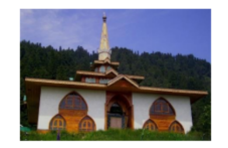
Shrine of Hazrat Ganga Baba Rishi located in Palapora of Poshker is amongst the popular tombs in Badgam district. This shrine is dedicated to Baba Rishi, who is believed to have constructed about 360 mosques and the same number of culverts. He stayed in Palapora after migrating from Maraz and according to the local people, in his entire time he planted more than thousand saplings.
21. THE SHRINE OF KHAN SAHIB
Situated in the Khan Sahib block of district Budgam, the shrine is associated with a famous saint - Hazrat Salen Khan - who belonged to Pakhla village (now in Pakistan) and came here in the sixteenth century along with his father, Ismail Sahib. On the day of the birth of his son, it is believed, 99 saints visited the house of Ismail Sahab to see the new-born child.

Syed Salen's father took his son to Baba Naseeb- ud-Din Gazi, a well- known saint of Kashmir, where the two stayed for over a year. Later, the Baba granted Ismail Sahib permission to leave and Syed Salen Khan stayed back and took religious and spiritual guidance from the Baba for 13 years.
During his stay in the cave, people began to visit Syed Salen Khan and soon he was widely known to be a saint of high order. The place came to be known as Khan Sahib after him. Hazrat Syed Saleh Khan passed away on Zeelqad17, 1019 Hijri. He was a fine calligrapher and a copy of the Holy Quran calligraphed by him is available at Watal Kadal, Srinagar. In the month of Zeelgad, a week-long urs (festival) is held at the tomb of Syed Saleh Khan Sahib.
22. SHRINE OF SYED MOHAMMAD SAMRI
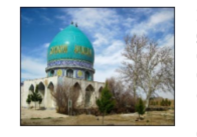
In Khag block, at Lasapora, is situated the shrine of Hazrat Syed Mohammad Samri. On the 12th of Phaguna the devotees throng the shrine to pay obeisance to the spiritual leader. The saint had arrived here from Shopian, in Pulwama, several hundred years ago and chose to meditate in the dense forests for years where, he later passed away. He is buried at Laspora.
23. THICKSEY GOMPA
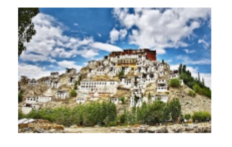
Located to the North of the Indus River on al hilltop, Thiksey Monastery built in 1430 AD belongs to the Gelukpa Order of Buddhism. Lakhang Nyerma a Temple dedicated to Goddess Dorje Chenmo is within the Thiksey monastery. Thiksey Gompa hosts the Gustor ritual, organized from the 17th to 19th day of September. Celebrated on an annual basis the sacred mask dance is also performed during the Gustor ritual.
24. TOMB OF BABA LATIF-UD-DIN
Poshker village is home to the tomb of Hazrat Baba Latif-ud-din Qazi, a worthy disciple of the Sheikh-ul-Alam (RA). The Baba, in search of employment, had to come to Kashmir from Kishtwar and when he arrived here, he began his quest for a spiritual guide. This search led him to Poshker where he had an audience with Sheikh-ul-Alam (RA). Known then as Ludo Raina, the Baba asked for the spiritual cure to his ailments.
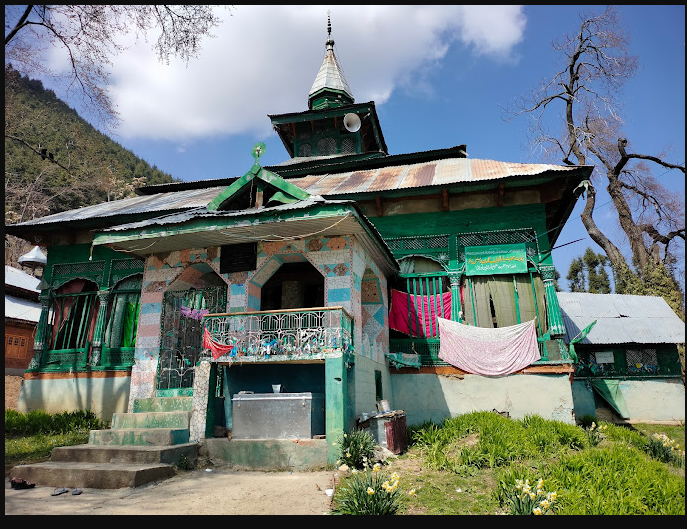
The spiritual power of the Sheikh influenced Raina and he became his disciple after which he was known as Hazrat Baba Latif-ud-Din By orders Sheikh Noor- ud-din Noorani (RA), the Baba left Poshker and meditated for years together in a cave known as Baba Marg, situated far away from Poshker, where he later also passed away.
The disciples of the Baba were anxious as to how their other colleagues in remote areas would reach this farflung cave to perform his last rites. On the 7th of Phaguna every year, an urs is held on the tomb where relics, including a sword of the Baba are displayed.
25. TOMB OF MADIN SHAH
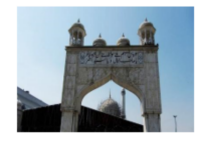
The Tomb of Madin Shah is a memorial shrine that lies towards the north of Zadibal's Madin Shah Mosque. It was built in remembrance of Madin Shah, who was a revered saint of the Kashmir valley. The tomb has been constructed in the 15th century Kashmiri architectural style.
26. TOMB OF MIR SHAMAS-UD-DIN IRAQI
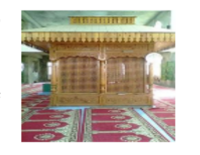
The shrine of widely revered Shiete theologist, Mir Shams-ud-Din Aragi is also situated in Chadoora Shamsuddin Iraqi first came to Kashmir towards the close of the15th century. He left Kashmir only to return back in 1502 along with the number of followers. His father was a Mosvi Syed and his mother too was from a Syed family of Qazvin in Iran.
27. TOMB OF SHAM DED
Tomb of Sham Ded is located in Poshker village in the district of Budgam. It is the burial place for Sham Ded, an ironsmith's daughter who learned the lessons of spiritualism from Hazrat Sheikh Noor-ud-din Noorani (RA) and Sheikh-ul-Alam.
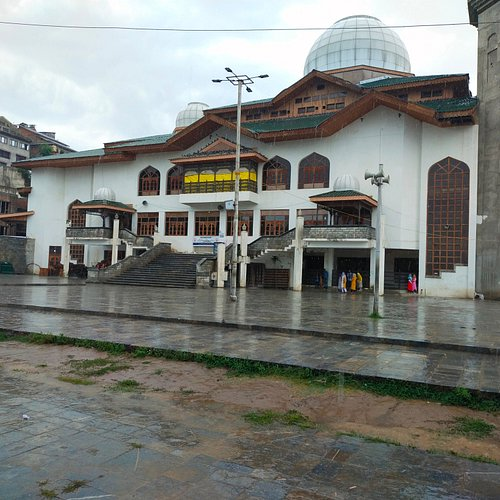
Sham Ded received her name from the disciple of Hazrat Sheikh Noor-ud-din Noorani, Baba Latif-ud-Din Qazi. It is believed that Sham Ded was the one to pass the information of the death of Sheikh Noor-ud-din Noorani to Baba Latif-ud-Din. It was evening time when she passed on the information. As a reason, she was named Sham, which means evening.
28. TOMB OF SHEIKH NOOR-UD-DIN
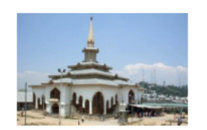
Tomb of Sheikh Noor-ud-Din, located 28 km from Srinagar at Chrar-e-Sharif, is popular as Alamdar-e-Kashmir or the flag-bearer of Kashmir. It is dedicated to Sheikh Noor-ud-din Noorani (RA) who spread the religious message of Islam in the valley of Kashmir. Coins were issued in his name after his death by Atta Mohammad Khan, the governor of Afghan. Sangram Dar, who was a disciple of Alamdar-e-Kashmir, constructed a mosque here.
29. TOMB OF SYED TAJ-UD-DIN AND SYED ALLA-UD-DIN

According to a legend, when Syed Taj-ud-Din arrived in Khag, the Mala Kol silently followed him from Sukh Nag to Skinderpora. Syed Taj-ud-Din first arrived in Sukh Nag where he stayed for long, and later, crossing various villages, reached Skinderpora, where he spends the rest of his life. Following his death, the mantle of spiritual guidance of people fell on his son, Syed Alla-ud-Din, who was equally a pious soul. The tombs of both the father and son are situated in Skinderpora and attract a large number of devotees.
30. TOMB OF ZIA-UD-DIN BUKHARI
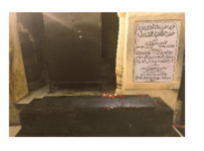
Tomb of Zia-Ud-Din Bukhari was constructed in memory of Zia-Ud-Din Bukhari, who came from Bukhara to the valley of Kashmir with 360 Syeds. According to the Islamic Lunar Calendar, the Zth month of every year that is 26th of Rajabis is celebrated. On the eve of Urs festival, a large number of local people pay homage to the saint.
31. USMAN MEMORIAL
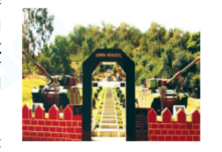
The Usman Memorial is a significant attraction of Rajauri town, situated at Jhangar. This memorial has been built in the honour of Brigadier Mohammed Usman, who was responsible for liberating the captured area of Jhangar. He died saving the place from a Pakistani attack in 1948. His memorial is maintained by the Infantry Unit of Jhangar. The heroic deeds of Usman along with the other civilians that died in the same war are commemorated here every year on the 3rd of July. which is also known as 'Jhangar Day'.
32. VAISHNO DEVI MANDIR
Located in Trikuta hills, Vaishno Devi Mandir is one of the most popular and revered pilgrimage centres in India. Dedicated to the Hindu deity Vaishno Devi, endearingly known as Mata Rani (Goddess Durga), this holy abode of the goddess is situated at an altitude of 5200 feet.
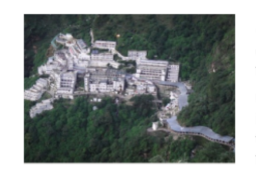
Unlike most of the temples where you will find idols, here, there are no statues. At this temple, you will only see three natural rock formations called the Pindies that are symbolic of the deity's three forms Maha Kali, Mata Saraswati and Maha Lakshmi. Bhairon Temple is about 2 km away from Vaishno Devi Mandir.
Since the year 1986, when the Shri Mata Vaishno Devi Shrine Board (commonly called Shrine Board) was formed, the management of the Shrine and regulation of the Yatra has been vested in the Board.
33. ZIARAT PEER MITHA
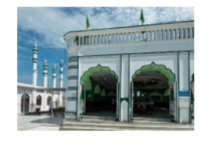
The Dargah, popularly, known as Peer Mitha a revered Islamic shrine, located in the heart of the Jammu city, this place of worship features a twin structure, which is composed of a beautiful mosque and a large tomb. This shrine is dedicated to Baba Ziarat, who was an esteemed Muslim saint. One day, his followers gave him a pinch of sugar (Mitha) as offering, which he accepted. This is from where the place derived its title, which is an amalgamation of the saint's name and the holy offering.

Comprehensive Notes on the History of Jammu and Kashmir: From Princely State to Union Territory